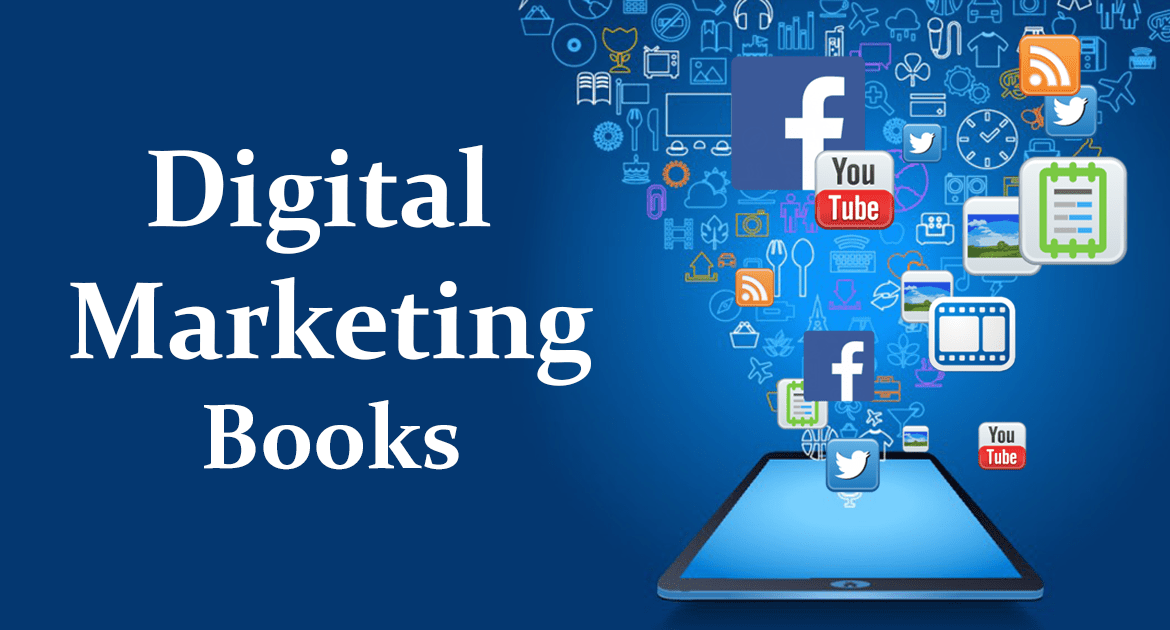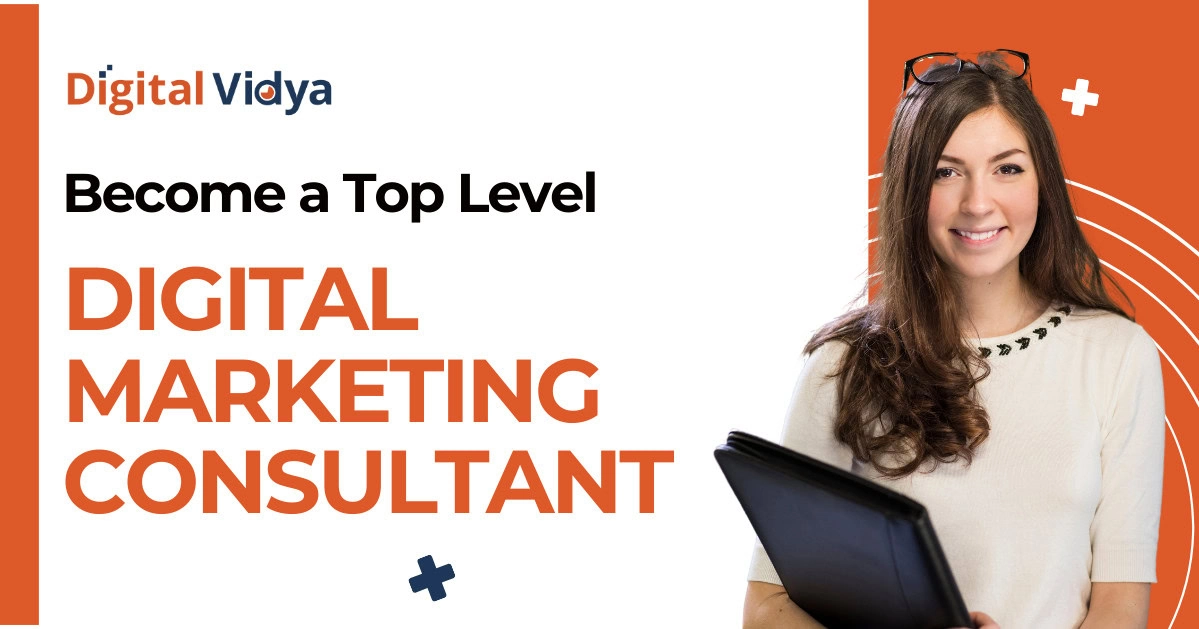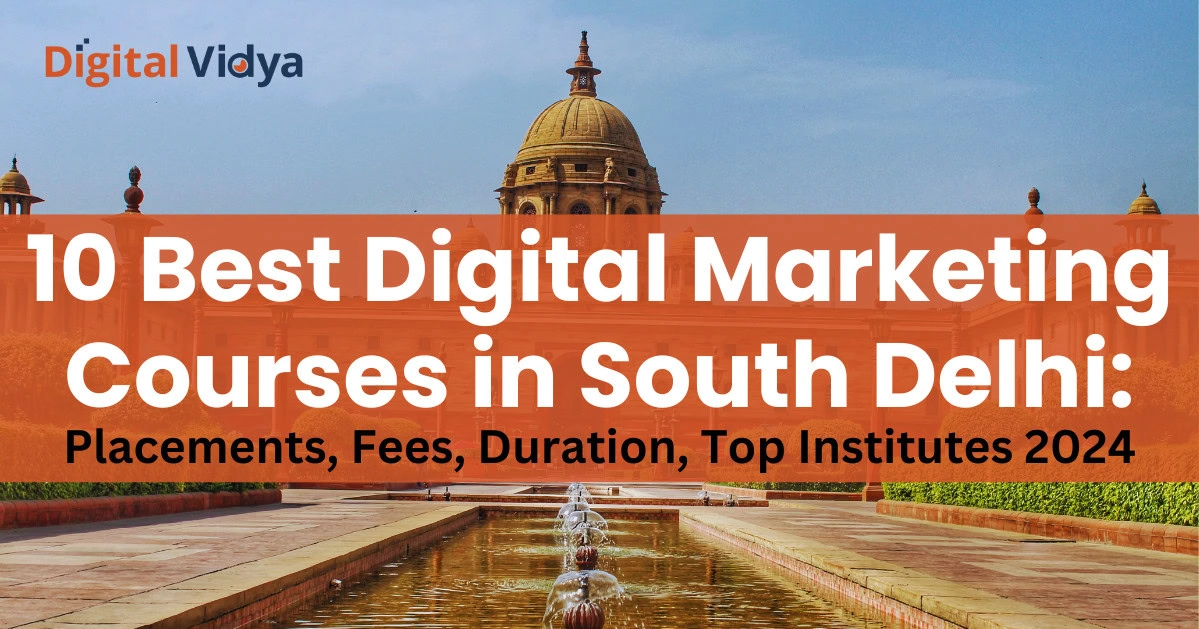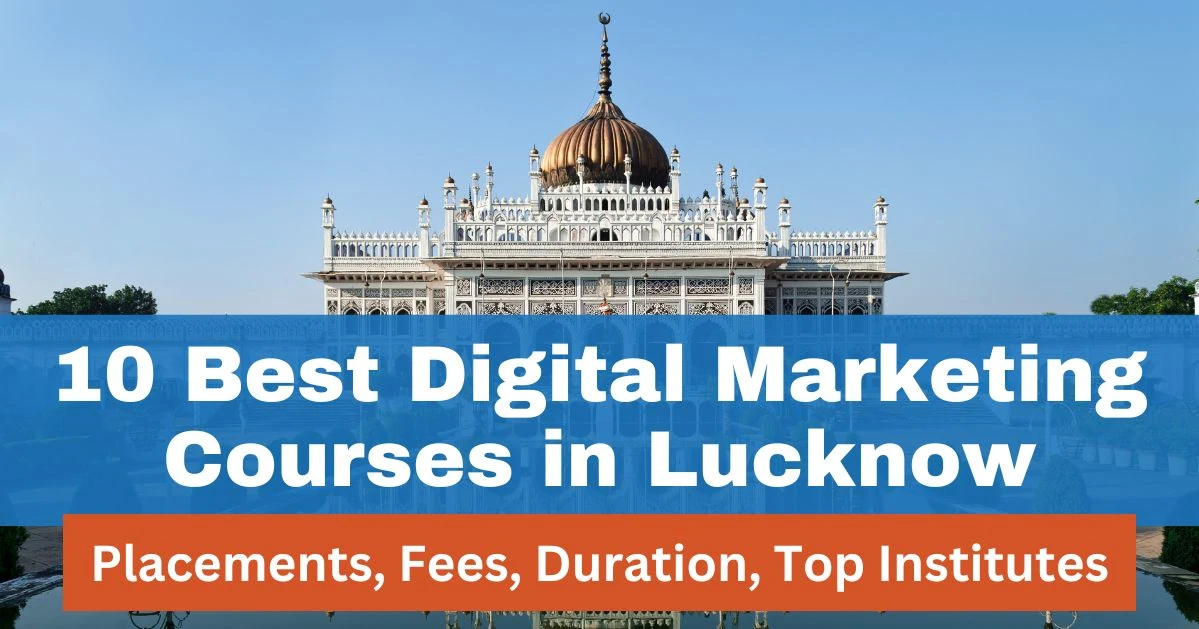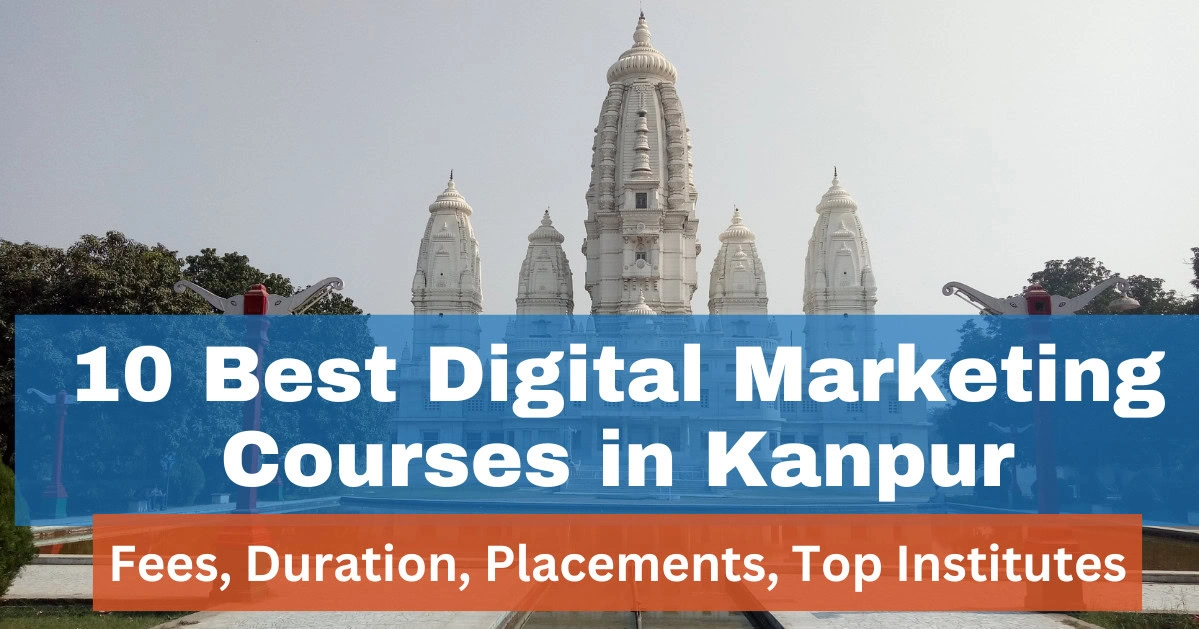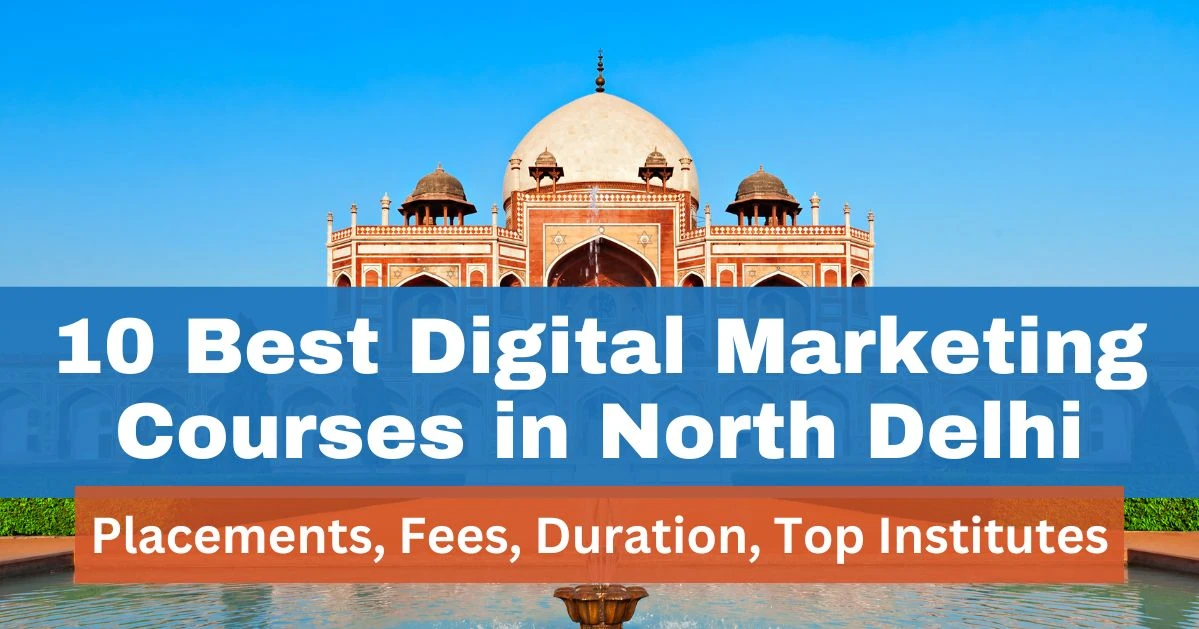Being in the marketing landscape, you must have heard about the term inbound marketing somewhere or the other. The common questions that arise after that are what is Inbound Marketing and how is it right for your business?
We are here to answer all your questions and provide a comprehensive analysis. Over time, the behavioral pattern of people has considerably changed. In the words of author David Meerman Scott:
“It’s no longer about pitching the Today Show. It’s about creating content that will attract the Today Show.”
After becoming hesitant towards the traditional marketing tactics, they have become inclined toward those strategies that provide them with certain valuable insights. This is where effective Inbound Marketing comes in.
This video will give us a quick overview of what is inbound marketing.
What is Inbound Marketing?
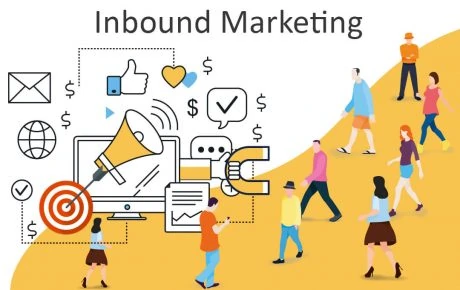
Inbound Marketing is that marketing strategy that attracts the attention of the prospects towards the products and services through marketing content, social media marketing, SEO, events, and webinars.
The main objective of the Inbound Marketing strategy is to create a valuable relationship with the prospects that have a positive impact on your business, as well as potential customers.
Inbound Marketing works with the notion of creating content that directly addresses the problems and needs of your ideal customers. Furthermore, this helps you in lead nurturing and building credibility for your business.
Being a part of the Digital Marketing Strategy, this marketing uses a perfect blend of content, SEO, and social content to attract the attention of potential customers.
74% of organizations worldwide rely on an inbound approach to marketing. Precisely, Inbound Marketing uses the “earned” and “owned” media rather than the paid one to drive qualified traffic, initiate engagement, and increase conversion rates.
Inbound Marketing Definition
According to WhatIs, “a strategy that focuses on attracting customers or leads via company-created Internet content, thereby having potential customers come to the company rather than marketers vying for their attention. This type of marketing tries to make it easier for customers who are already actively looking for goods or services via the internet to find what a company offers.”
What is Inbound Marketing vs Outbound Marketing
As the names suggest, it focuses on drawing in customers to your business, whereas an outbound marketing strategy is pushing out your business’s offering.
What is Inbound Marketing?
Marketers use owned and earned media to promote their products and services and pull in customers with creative ideas. Let’s understand the concept of owned and earned media in detail.
(i) Owned media
These are marketing ways that a business can control, meaning they are owned by the business. These include blog posts, social pages of the business, landing pages, YouTube videos created by the business, and more. You can choose when and what to publish and which users to target.
(ii) Earned media
Earned media is the media coverage you or your business earns. Offline, this includes print media like newspaper or magazine ads. The forms of online earned media include digital PR on news sites, social mentions by influencers, online reviews, etc.
What is Outbound Marketing?
Outbound marketing is generally a form of paid media. This includes advertising, paid emails, and social media advertising through Facebook or Twitter.
Though social channels are a form of outbound marketing, they can just as effectively be used to bring more users to your business. 62% of marketers see outbound marketing as effective while 38% say it’s not.
Inbound vs Outbound Marketing Examples
Inbound Examples
Blogs, social media, opt-in emails, search, influencer marketing, and native advertising.
Outbound Examples
Display ads, billboards, telemarketer scripts, magazines, TV ads, cold email outreach
Why Is Inbound Marketing in Vogue Today?

Gone were the days when marketers and advertisers relied on the traditional methods of advertising. Perhaps, to make the marketing landscape even better, accurate, and result-oriented, Inbound Marketing evolved which proved its worth at a fast pace and showcased its efficiency.
There are a number of reasons why prospects and advertisers are more inclined toward the digital Inbound Marketing strategy.
Firstly, it provides prospects with helpful content rather than a typical sales pitch.
Secondly, it targets the most suitable audience, thereby generating high-quality leads. Thirdly, it presents the marketers as trusted sources of information.
The effectiveness can be assessed on the basis of the following parameters:
(I) Inbound Marketing perfectly complements Modern Marketing
With the evolution of technology, the behavioral pattern of people has also changed. They are more inclined toward interacting with valuable and informational content.
Here, Inbound Marketing proves its worth by targeting a specific audience and earning their trust by providing the desired solutions to their problems.
Unlike the traditional methods of marketing, it delivers more value to potential customers, nurtures them, and guides them through their buying process.
These ways complement modern marketing in the most suitable manner.
(II) Inbound Marketing offers Relevant Solutions to the Prospects
Nowadays, people lead excessively hectic lives. As such, sending them emails regarding irrelevant sales pitches or giving automated sales calls (through marketing automation) can lead to them forming a negative impression of your business to them.
Moreover, people tend to block email ids and phone numbers. These strategies simply defame your relationship rather than develop them.
On the other hand, it works in the other direction. Rather than disturbing the prospect, it grabs their attention by offering them valuable information.
There are certain Inbound Marketing Statistics worth sharing:
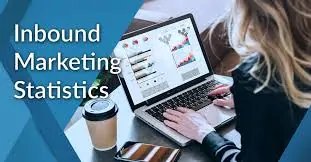
(i) According to Hubspot, 46% of marketers have said that they have generated a higher ROI with the help of Inbound Marketing, while 56% of marketers have reported that it produces higher quality leads for sales.
(ii) B2B Content-Marketing 2019 Report says that 58% of the marketing budget is spent on content creation rather than content-marketing strategy.
(iii) The leads generated from Inbound Marketing are 61% less costly than the outbound leads.
(iv) For converting leads, inbound marketing is 10 times more effective than outbound.
(v) Marketers who preferred Inbound Marketing were able to double the average website conversion rate from 6% to 12%.
The Proven Inbound Methodology for Growing Business
As we all are familiar that the buying or purchasing behavior of people has considerably changed over time. The way they look for information, communicate, and expect from a certain business has all changed.
The Methodology is a strategical process of four stages viz attract, convert, close, and delight. This process is specially designed to target customers at various levels.
The combination of this methodology with technology has helped businesses to match the pace of the changing behavior of the customers.
It provides spectacular results not only in the financial aspect but also in building a strong and long-term relationship with customers.
The methodology revolves around the notion of responding to the customers in the best possible way. Attracting customers with the help of knowledgeable and valuable content.
First, converting by using Call-to-Actions and Landing Page. Second, close your leads and convert them into long-lasting customers. And last, delighting them with consistent social media and content activities.
Components of the Inbound Methodology
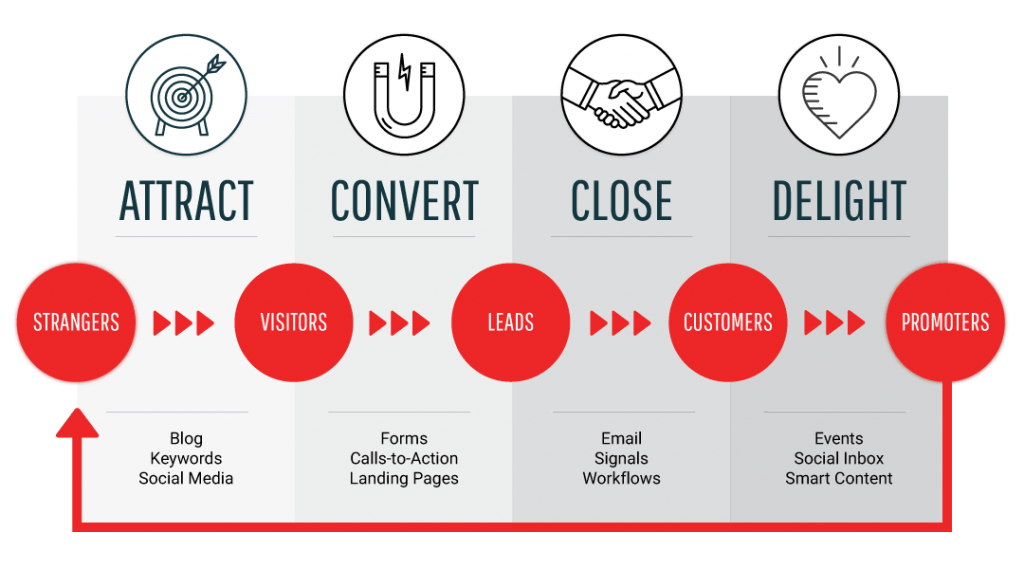
The Methodology is divided into four stages: Attract, Convert, Close and Delight. Let us study the breakdown in detail.
1. Attract
This is the very first stage of the methodology. This stage is precisely designed for converting strangers into visitors.
While looking forward to creating relationships, you should attract individuals who are interested in your product and service and also have the potential of becoming your valued consumers.
You should take all your marketing activities keeping them in mind. To understand the behavior of your prospects, you need to create buyer personas for them. A buyer persona is a set of characteristics and features that your potential customers possess.
The next step is to create content that grabs the attention of your potential customers in addition to persuading them to take the next step in the buying process.
For attracting customers, you can use the following strategies:
Blogging
Blogging is one of the best techniques for attracting prospects. It allows the prospects to get engaged with your brand. Hence, it is recommended to start a blog and then integrate it with the main website.
Include tips, trends, reviews, comparisons, strategies, techniques, and even visual content like videos and infographics in your blog. Use simple language and address as if you are speaking to them.
Social Media
A majority of the population is present and consistently active on social media, all thanks to the smartphone and the telecom industry that made social platform connection convenient with just a click of the power button of the phone.
The three social media sites utilized by marketers the most frequently are Facebook, Instagram, and Twitter.
The fact that a major number of people are online on social platforms makes it mandatory for you to connect with them there.
The platform not only acts as a great resource to share your content but also proves to be a potential factor that builds a connection between you and your prospects.
Keywords
The web is cluttered with billions of websites and the competition is intense. In order to gain visibility and competitive advantage, you need to make sure to derive a better rank on the SERPs.
Moreover, to rank high and derive qualified traffic to your website, optimize the keywords that are present on your website. For this, you need to know the type of search queries your prospects type in when they look for products/services like you.
On the more, derive keywords from these search queries and place them in the URL, page title, body text, and alt text for images and tags. These keywords help search engines in determining what the page is all about.
This lets the search engines provide relevant results to the users. Also, avoid the use of unnecessary keywords in the text.
Landing Pages
Apart from the optimization of keywords, the landing pages should also be optimized so that they become visually as well as interactively appealing.
To make the landing pose eye-catchy, you should use images and videos and have user-friendly navigation along with interconnected links.
Attractive landing pages are responsible for retaining the user for a longer time and increasing the engagement rate. Along with linking your website internally, it is exceptionally important to include some outbound links.
Since these outbound links provide the website with some authority which has a direct effect on the ranking of the website.
2. Convert
The next thing that comes after attracting visitors is to convert them into long-term and loyal visitors. Primarily, you need to obtain their contact information to get ahead with the conversion process.
The challenge arises when it comes to obtaining the contact information of all the potential customers. Generally, when you need something you have to pay a certain cost for it. However, in this case, you can’t pay someone for filling in their contact information.
Because like this, even the unwanted audience dives in. Thus, to make sure that you get the contact information of the targeted audience only, you will have to give them something in return that they can use.
Offer something that is important, as well as valuable to them. This can include eBooks, reports, case study, webinars, and other educational stuff.
Call-to-Action (CTAs)
Call-to-Actions are special buttons or links which are designed by keeping a special conversion in mind. They convince your visitors to take the desired action that you want them to take.
For Example, “Download eBook” or “Register Now”. Since the Call-to-Actions are responsible for initiating more conversions, they should be easily noticeable and clear along with compelling words.
Contact List
Obtaining the contacts is not enough, you need to maintain a proper database. This database is required to keep a track of all the interactions that you have had with those particular leads.
It should clearly state the number of leads that have been contacted and the progression of the process. You should also include the next steps in it.
3. Close
The next step after conversion is closing the leads and making them your customers. Before closing the leads into customers, ensure that they are sales oriented and are ready to make the purchase of your product/service.
However, there are certain tools and marketing techniques that push your leads through the conversion funnel.
Emails
Emails are the traditional method of guiding your leads towards the conversion funnel. Generally, marketers use the email technique for those leads who have interacted with their content but have not made the purchase.
The general objective of this email tactic is to create a sense of trust in your lead so that they are motivated to take the final conversion step. Sending relevant, valuable, and engaging content to the leads can help you in achieving those long-term customers.
Lead Scoring
This is a way to judge whether the generated leads are sales-oriented or not. In this technique, a certain numerical value is assigned to the leads on the basis of how sales-focused they are. This is done by tracking the web activities of the leads.
4. Delight
Inbound Marketing does not end with the sale of a product or service. It continues after your leads have been converted into loyal customers. Remember, we have been talking about converting the leads into loyal and long-term customers.
Delight is the component where the importance of long-term customers comes in. The purpose is not to just build a huge list of customers, but it rather looks forward to making those customers the promoters of the products and services.
Thus, to establish brand loyalty, you need to deliver value to your customers even after the sales process. This is also done so that your existing customers do not forget about you in the course of time.
Inbound Marketing Strategies
For each of the above inbound marketing methodology, you need the right strategy to attract more audiences to your small business.
Here are a few tried-and-tested strategies you can use for your campaigns.
1. Target the Right Audience
This is a crucial part of your campaign — understanding what your customers want to learn. Some of the ways you can understand your target audience are:
(i) Facebook Insights
On your business page, you can easily see the demographics of your business. Go to Insights on your Facebook page and navigate to People. In the ‘Your Fans’ column, you will know how many people are interested in your startup.
Once you know who is attracted to your page, the next step is to determine what attracts these people.
(ii) Customer Survey
The simplest and quickest way to know what your audience expects from you is through a survey. This survey should be based on two questions: “what do you want to hear from us” and “what attracts you to our content.”
This will help you understand what your users expect from you, thus helping you deliver content people want to see.
(iii) Interview Current Customers
For more detailed information, contact people who have recently become your customers for a small interview. Use the interview as a chance to understand what struggles your customers face and what frustrates them.
You can make the interview a win-win for both parties by offering them advice in return for a few minutes of their time, like a free consultation.
2. Partner With Influencers
When you partner with influencers, you share your content with influencers and they share their reviews about your product and brand.
Many top brands use this strategy to increase their viewers. When done right, this method helps increase the buzz about your brand without spending a ton of money.
(i) Find influencers with more following
To make influencers promote your brand, you need to find the right person with your target audience following.
(ii) Get to know your influencers
Build a relationship with your influencers slowly instead of sending them content and asking them for promotions right away.
Doing so will give them a chance to know your brand better.
3. Produce Quality Content
Unique and relevant content is the key to your marketing success. Generic posts and videos can only take you so far.
To attract potential customers create content targeted to a specific user group. Analyze the individuals who are most likely to be your customers and what they are looking for in your brand.
Deliver content based on these expectations to bring in new leads. Below are some tips you can use to create new content.
(i) Headline
The headline is the first thing your customers will read in your content, so make sure you start with a stellar headline that captures the gist of your content. For example, you can even have a negative headline, something that highlights your customer’s struggles and how to overcome them.
(ii) Media
Include some form of media, like relevant images or videos to help users better absorb your content. Charts and statistics also help add more depth to your content.
Fill your content with relevant and related things rather than fluff that your readers might just browse through and not read.
(iii) Data
Like media, data is another thing that helps bring relevance and uniqueness to your content.
Things like e-books, podcasts, webinars, or reports make excellent additions to your content, especially when you have long articles.
4. Offer Free Content
Offer your audience some kind of incentive to make them your customers. A good example of this strategy would be to offer free content in exchange for their contact information.
Some other incentives you can offer include:
(i) Organizing Webinars
With a free training session or webinar, your audience can get to learn and you can get potential customers. This will also help you meet your audience and works better than a guide since many users might not read a guide.
(ii) Creating free reports
Reports are a great way for start-ups to acquire new leads. Reports give the audience an idea of what your brand is about. You can use this as an opportunity to get customer contact details by offering the report in exchange for contact details.
(iii) Create email courses
Creating a report or organizing a webinar takes time, so if you want to communicate with your audience in between, an email course is a good way to do so.
It gives your audience something to learn and helps you stay connected with them.
An email course can help you send valuable information to your users without spending too much.
5. Go for Guest Posting
Guest posting is among the top inbound strategies since it gives you a chance to promote your content through backlinks. Below are some tips to ensure you get the most out of guest posting.
(i) Be consistent
Guest posting helps attract customers, but only if you do it consistently. Create compelling content for other blogs and make sure you appear in various places.
(ii) Be prolific
Make sure to post on sites that have high viewership. Your goal is getting ROI, and posting in places with a dead audience is not going to give you that.
(iii) Be unique
We have mentioned this several times in this post and here is a reiteration of that fact: if your content is unique, it will give you more audience. There are so many generic posts online that something different can really stand out.
(iv) Be interactive
You can interact with your readers in the comments. This will help your hosting site get more views and you can build a relationship with your readers.
Lastly, mention the pages where you have posted content on your own website.
6. Use SEO
SEO is an essential aspect of any strategy in today’s online marketing landscape.
Here’s how you can use SEO to promote your campaigns.
(i) On-page SEO
Optimize keywords to help increase your SERP ranking. For every content that you create, use relevant keywords and phrases.
Make sure to add all your keywords naturally in the content, and avoid adding too many instances of a keyword, which can result in over-stuffing.
(ii) Backlinks
When other sites, blogs, or influencers use backlinks to your site, it promotes your brand awareness. The number of backlinks to help improve your ranking differs with search engines, based on the trending keywords and competition.
While SEO is one of the most popular Internet Marketing strategies, there is another parallel strategy of Digital Marketing which is PPC. Read this Quora answers to know which form of Marketing (SEO or PPC) is the best.
7. Make Your Website Accessible
Mobile searching is a large part of any website’s visits, so it’s necessary to make your website accessible from mobile devices.
Also, make sure that the user interface of your website is user-friendly. Many brands fail to make the mobile website easy to navigate, which irritates users and you can lose potential customers.
8. Engage with Email Campaigns
Email marketing is very useful in inbound marketing, but only if you do it right.
(i) Start with your subscribers
Emails are a good way to engage with your subscribers. But your emails should be strategic and promotional.
Send valuable information to them via your email. Spamming your subscriber’s inbox is only going to irritate them and cause them to unsubscribe.
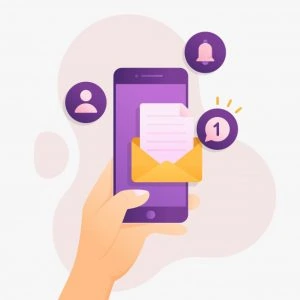
(ii) Plan for long-term campaigns
Email marketing involves sending quality content to your audience for the long term.
This includes mentions and invites to new campaigns and any promotional information. Send information about your brand and product details gradually.
Getting Started with Inbound Marketing
This marketing style is all about creating campaigns and content that is unique and relevant. The strategy here is simple: creative inbound marketing strategies get better success in marketing campaigns.
More than investing, it is about creating quality content. Having an Inbound Marketing Plan can help you successfully create and execute your campaign. Follow these steps to get started.
(i) Identify your Target Audience
Research what your target audience likes in the content they follow online. Known the ticks of your audience so that you can create content that will attract them.
(ii) Determine the core point
Every campaign targets a particular product or pain point in your business. The second step is to determine your core story and make it unique so that your audience has a reason to listen to you.
(iii) Pick your delivery platform
The platform that you choose to reach your customers is the most important part of a campaign.
Here, you need to find out which social platform has the most reads or follows from your target audience and use that as your primary delivery platform.
Facebook, Pinterest, blogs, and YouTube are some popular ways to initiate a marketing campaign.
(iv) Prepare a content calendar
A marketing effort cannot be executed in a day. It requires careful execution spanning a few days or weeks.
To enable proper execution of your inbound marketing strategy, prepare a content calendar that states when to publish which content and via what delivery platform.
(v) Measure your success
Lastly, keep an eye out for your audience’s reaction to your campaign. Whether they like it or not, and if they do like it, what part gets most people’s attention, what they like about that aspect of the campaign, and so on.
Analyzing the success of your current market will give you a base for preparing your future strategies.
Benefits of Inbound Marketing

1. Generates Quality Traffic
One of the primary benefits is that it is laser-focused on reaching the right audience at the right time. This results in a high engagement rate of the target audience.
When you connect with the target audience at the right time, they tend to get attracted to your offer. As a result, it not only attracts traffic but it rather attracts qualified traffic that acts as an asset.
2. Increases Trust
This method of marketing provides the target audience with all the relevant and valuable information that they are looking for.
Moreover, this initiates a trust factor in them and they develop faith in your product or service. As it does not push sales but provides information, it tends to make your business credible.
3. Cost-Effective
It is not only effective when it comes to lead generation. It is also cost-effective and this is a suitable method of marketing for almost all types of business as it does not include a huge budget.
Moreover, It uses a wide range of free inbound marketing tools that process and deliver optimal results through marketing automation.
How to initiate Inbound Marketing?
The more you invest in this type of marketing, the greater and optimal results you get. Inbound does not push sales but provides informational and valuable insights to the target audience.
Therefore, taking this thought into consideration you should focus on creating exceptionally valuable content. The content should be focused on solving the pain points of the audience and also give clarity to all their doubts.
Steps to get Started
1. Identify with the Target Audience.
2. Conduct thorough research on their tastes and preferences.
3. Create a unique and compelling story.
4. Choose the platforms for delivery (social platforms, blogs, email, etc).
5. Create a calendar and follow it.
Types of Inbound Marketing
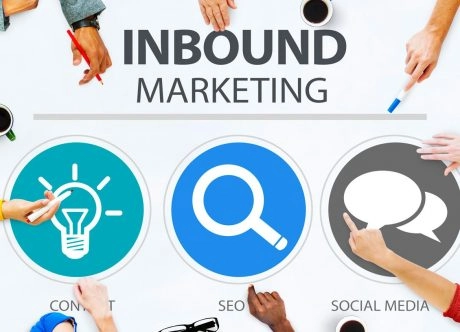
1. Search Engine Optimization
SEO is a well-framed process of making quality changes in various areas of your website. This is done so that the engines can find relevant information and deliver the same to the target audience.
In order to reach out to the target audience in an organic manner, you need to rank higher in the SERP. Furthermore, the SEO process looks forward to making your website optimally best and helps in getting a higher rank.
2. Social Media
Social Media is another emerging platform that helps marketers connect with the target audience on a personal level.
Generally, more and more people are becoming active on social media, it has become one of the most effective platforms to get connected with the targeted audience.
Hence, you just cannot afford to miss this popular form of marketing where the target audience can easily form connections with you.
3. Content Marketing
Content is a huge part of this special source of marketing. Therefore, by creating and sharing a lot of informational and valuable content with the target audience, it develops a trustworthy relationship.
Various types of content can be shared like blogs, videos, podcasts, infographics, and whatnot. Content marketing does not really force people to read the information. Interested people automatically reach out to the information.
Examples of Inbound Marketing
There are a lot of strategies and tactics involved and it depends on the marketer to pick the right one for their business.
Here are some examples that can give your brand popularity.
1. Blogs
According to HubSpot, companies that consistently publish blogs get more audiences. Publishing a blog at least 15 times a month is likely to give you three times more ROI.
Blogs are not just a way to connect with your audience, but also give them answers to the struggles they face with your products.
Educational and unique are the two things that every blog should be.
2. Infographic
With infographics, you can visualize your content, thus helping your audience absorb it better.
Sometimes readers might not feel like going through the entire content, and infographics will give them an overview of the information they are looking for.
3. Whitepapers
A whitepaper is a great way to get new prospects acquainted with your business. It is also a handy tool as well.
Say your whitepaper contains educational content but with a more formal tone than your blog. This whitepaper is targeted at audiences who expect more original and in-depth information.
Also, a whitepaper can help you get the viewer’s contact details in exchange.
4. Ebooks
Ebooks and whitepaper have the same advantages, and an eBook is just another way to share information with leads.
But, an ebook is essentially a book and thus needs a certain level of sophistication. It is recommended to use ebooks only for your hard-hitting content.
5. Case Study
When users look at your content, they focus on how the content could help them. Sharing case study and customer success stories will help them relate to your brand better.
For instance, a customer comes across an instance of a company similar to theirs that recently came purchased software they were considering.
When one customer posts a positive review about a product, another person may think that it would work well for them, too.
Include such customer success stories and case studies in your content to attract potential customers.
6. Podcasts
Podcasts are a recent introduction, but they have achieved great popularity. With a podcast, you can attach your personality to that of the brand, creating a personalized experience for your users.
Your podcasts don’t have to be a task either, you just need a laptop and mic. Ideally, one 15-20 minutes podcast a week can help attract viewers.
Closing Thoughts
The world has become digital. Traditional methods of marketing have been taken over by Digital ones. People are inclined toward grabbing more valuable information. Rather than just purchasing any product or service, they want to learn every bit about it.
Moreover, owing to the fact that the buying behavior of the people has changed, outbound marketing alone cannot deliver the expected and desired results.
Thus, the techniques are brought forward and optimally executed to complement Outbound Marketing to attract more leads and increase conversions.
However, Inbound marketing plays a crucial role in your online business. It helps you by attracting visitors to your website and turning them into sales. Thus, to get an in-depth understanding of this effective marketing, join our Inbound Marketing Course.
FAQs
Question: How does Inbound Marketing work?
Answer: This is accomplished through the use of email list segmentation, social content platforms, call-to-actions & landing sites, SEO, and the creation and publication of unique content.
Question: How quick is it to apply Inbound Marketing?
Answer: There is no set period because there are many factors at play, including your business’s industry, the effectiveness of your present website, the volume, and frequency of material you produce, how frequently you blog, and more. This implies that how you organize everything above will determine how quickly you receive results and attract leads.
Question: What sort of Inbound Marketing content should I create?
Answer: Consider the forms of information that users like to search for while creating new content. Blog articles, white papers, ebooks, infographics, slideshows, videos, surveys, and other easily discovered content are available nowadays. You can get leads’ contact information by using downloadable material. Your writing must be instructive. The objective is to offer people a free resource that is instructive and interesting. Always keep in mind that your content needs to be intelligent, visually appealing, and simple to share.
Question: What platforms should I be using for Inbound Marketing?
Answer: The platforms that businesses use the most these days include Facebook, Twitter, Linked In, and Youtube. Nevertheless, depending on your sector, we love to think about and use additional platforms: Pinterest, Instagram, Flickr, and the list goes on and on. There are several options. The platforms that best fit your industry and needs will be suggested when we develop your strategy.
Question: Does Inbound Marketing require a significant budget?
Answer: The cost to develop a strategy depends on a number of factors. Depending on what you put into the approach, you can decide how big or tiny it is.

